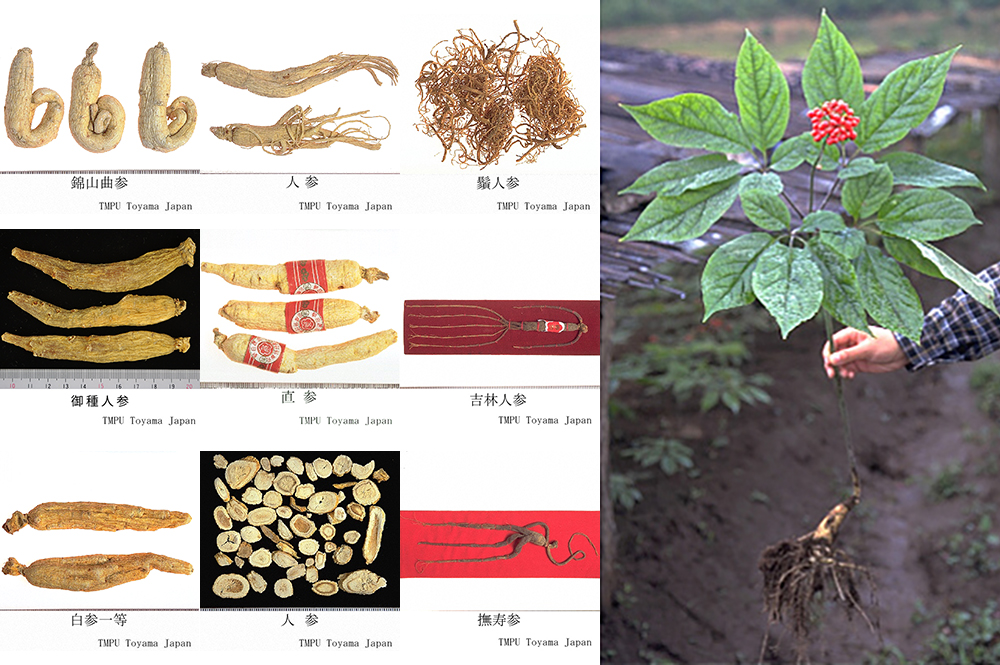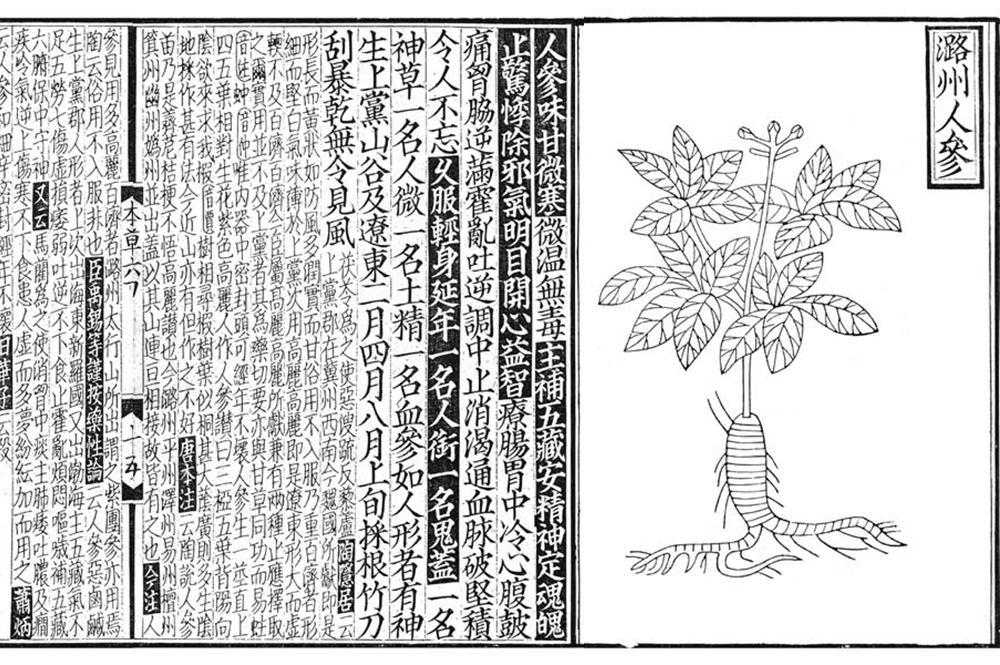Databases
Imagery data posted on the Museum databases
It is prohibited to use any contents (e.g., documents, materials, images, etc.) posted on the website without the Museum’s authorization.
Only in the case of using imagery data found in the Museum database, visitors will be asked to prescribed procedures.
Explanatory notes on each database
ETHMEDmmm
ETHMEDmmm: the database of ethno-medicine in the world
Approximately 30,000 herbal medicine specimens, used for traditional medicine across the globe, are preserved and displayed at the Museum of Materia Medica, Institute of Natural Medicine, at the University of Toyama. Some of these specimens are the byproducts of academic investigations conducted in Japan and overseas; much knowledge has been gained through examination of these specimens. The collection at the museum is highly valued as research or educational materials. The scale of collection sites, the number of collections of other medicinal herbs with the same name, and the history behind the collection are unmatched worldwide.
In addition to offering basic information about herbal medicine specimens, the purpose of the Ethnomedicine Database is as follows: to inform the public about herbal medicine specimens’ usage in each school of traditional medicine; to facilitate a variety of medical or pharmaceutical research by providing useful academic information concerning results of scientific research to researchers in and outside of Japan; and to present accurate information about utility and safety of crude drug ingredients for Kampo or traditional Chinese medicine and health food in Japan and encourage appropriate use of such products.
The three major traditional medicines in the world comprise Chinese medicine, Indian medicine (aka Ayurveda), and Unani medicine (aka Greco-Arab medicine). These leading schools of medicine spread to surrounding nations and developed into Kampo or Sino-Japanese traditional medicine, traditional Tibetan medicine, traditional Thai medicine, and traditional Uighur medicine. This development is evident from the collection of traditional medicinal substances (herbal medicines) used in the practice of the forementioned traditional schools of medicine preserved at the Museum of Materia Medica. Thus, our database was developed and classified by each school of traditional medicine.
We began by developing a Database for Japanese and Chinese Traditional Medicines used for Kampo or Sino-Japanese traditional medicine in Japan and traditional Chinese medicine. We organized relevant information concerning herbal medicine specimens and academic research. Then, we moved onto establishing a database for Ayurveda herbal medicine, Unani herbal medicine, Tibetan herbal medicine, Thai herbal medicine, and Indonesian herbal medicine in consecutive order. The Database for Japanese and Chinese Traditional Medicines, written in Japanese, was launched 3 years after commencing the project in 2000. Afterwards, online software development for the Japanese and Chinese Traditional Medicine Database in Japanese and English expanded into the design of the system that included the database for Ayurveda herbal medicine. This system was applied to databases for all traditional medicines. In other words, this enabled searches based on the same condition, such as the scientific name or botanical origin, across all the databases of traditional herbal medicines that meet certain criteria. It is our earnest wish that establishing the database will contribute to the development of international standards for herbal medicine.
In order to create the Ethnomedicine Database, we established the Database Development Committee whose leadership revolved around the Drug Efficacy Analysis Center (currently named the Research Center for Ethnomedicine). To identify, collect, and organize traditional herbal medicine from countries other than Japan or China for the museum collection, we sought expert overseas collaboration by inviting scholars from relevant countries renowned for traditional medicine as Visiting Professors or Assistant Professors to the Institute of Natural Medicine. Thus far, we have received contributions from 14 researchers outside of Japan. Furthermore, development of the database system at the museum has been steadily progressing thanks to the funding support received by Grants‐in‐aid for Scientific Research endowed by the Japan Society for the Promotion of Science (research publishing promotion expenditure) and the 21st Century Center of Excellence Program of the Ministry of Education, Culture, Sports, Science and Technology (University of Toyama).
Shoruihonzou DB
Shoruihonzou DB: Chinese herbal classic "Zhèng Lèi Běn Cǎo"
Within the Ethnomedicine Database, the Japanese and Chinese Traditional Medicine Database is most suited to searches for drug efficacy or usage of herbal medicines in Kampo or Sino-Japanese traditional medicine or traditional Chinese medicine. In this database, visitors can not only search for efficacy of herbal medicine and ideal plant type in ancient times or their transition through history but also have the opportunity to view the original text of "Zhèng Lèi Běn Cǎo (Takwan-pênts`ao Chingsu-chenlei-takwan-pênts`ao)," the so-called "Bible of medical herbs in China" as image data. Deciphering the original text and understanding the material was challenging even for the experts. However, we completed the first ever translation of "Takwan-pênts`ao Chingsu-chenlei-takwan-pênts`ao " into Japanese and started the database system development project. Building on the previously published book "Shén Nóng Běn Cǎo Jīng," "Zhèng Lèi Běn Cǎo" is a series of books on medical herbs published in China around the first century CE . While adding references and a list of items (herbal medicines), a total of 31 volumes in the series was published up to the time around the 12th century. It is one of the most respected, authoritative books on medical herbs in China and worldwide. This book collection contains approximately 1,700 items. The medicinal plants, animals, and minerals as well as edible fruits, rice, vegetables, and animals are classified according to their morphology, place of origin, and the time period. Relevant content of the period was added to each volume as appropriate. From the perspectives of medical, pharmaceutical, and plant science fields, "Zhèng Lèi Běn Cǎo" is highly valued by pharmacognosists in both China and Japan for its accuracy and abundant information. Despite this recognition for high-quality scientific content from the experts, "Zhèng Lèi Běn Cǎo" has never been published in Japanese before because it was written in esoteric classical Chinese texts of ancient times. We first commissioned translation of the original text to the experts at the Mojikyo Network, an incorporated nonprofit organization, and closely examined the accuracy of the returned draft with the Database Development Committee comprising members from the Institute of Natural Medicine. After a few revisions, this committee decided to build the database to include the translations along with the original texts. Moreover, we created the database after translating and editing the articles from a similar book on medical herbs, "Ben Cao Yan Yi," written during the same period, which is known for excellent descriptions of medicinal virtues. We linked this Zhèng Lèi Běn Cǎo database with the Ethnomedicine Database to complete the comprehensive database of herbal medicine and medicinal herbs . By making this invaluable information widely available to researchers and the public alike, we aim to contribute to the advancement of natural medicine. "Zhèng Lèi Běn Cǎo" includes items that are classified as foods. Thus, the database is likely to offer benefits to eating in regard to "a balanced diet leads to a healthy body" rather than solely focusing on modern scientific or nutritional concepts. Consequently, visitors can gain a deeper understanding of the efficacy of eating well and embrace the idea that proper diet and Chinese herbal medicine share the same principles.



